Anna Bhagya Yojana: Ensuring Food Security for All in Karnataka
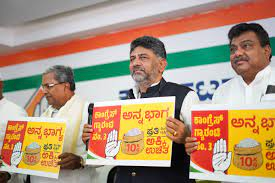
In today’s world, where access to sufficient food is still a challenge for many, government-led initiatives play a crucial role in alleviating hunger and malnutrition. Anna Bhagya Yojana is one such program implemented by the Government of Karnataka, with the aim of ensuring food security and providing nutritional support to the economically disadvantaged sections of society. This article delves into the key aspects of Anna Bhagya Yojana, its eligibility criteria, benefits, application process, distribution mechanisms, impact, challenges, success stories, and future prospects.
Introduction
Anna Bhagya Yojana, launched in 2013, is a flagship program of the Karnataka government. The scheme takes its name from the revered social reformer and freedom fighter, Anna Bhagya Ratna Dr. B.R. Ambedkar. It aims to eliminate hunger and malnutrition by providing subsidized food grains to eligible households across the state. Through this initiative, the government strives to address the root causes of food insecurity and empower vulnerable communities.
Eligibility Criteria
To avail the benefits of Anna Bhagya Yojana, households must meet specific eligibility criteria. The scheme primarily targets households below the poverty line, and the income criteria vary based on rural and urban areas. Additionally, residency requirements ensure that the scheme benefits the intended beneficiaries residing within the state of Karnataka. Priority is given to destitute, socially disadvantaged groups, and households headed by women.
Benefits of Anna Bhagya Yojana
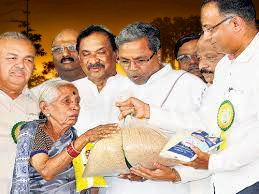
The Anna Bhagya Yojana is a welfare scheme introduced by the Government of Karnataka, India, to provide subsidized food grains to the economically disadvantaged sections of the society. The scheme aims to ensure food security and improve the nutritional intake of vulnerable populations. Here are some of the benefits of the Anna Bhagya Yojana:
Subsidized Food Grains:
Under the scheme, eligible beneficiaries receive essential food grains, such as rice and wheat, at highly subsidized rates. This helps to alleviate the financial burden on economically weaker families and ensures their access to affordable food. Read also- PM Pranam Scheme
Food Security:
The Anna Bhagya Yojana focuses on ensuring food security for all eligible households. By providing subsidized food grains, the scheme helps prevent hunger and malnutrition, especially among vulnerable sections of society, including the poor, marginalized communities, and low-income families.
Nutritional Improvement:
The scheme plays a crucial role in addressing the issue of inadequate nutrition. By making essential food grains affordable, it enables families to access a balanced diet and improve their nutritional intake. This is particularly important for children, pregnant women, and lactating mothers, who require adequate nutrition for their growth and development.
Poverty Alleviation:

The provision of subsidized food grains through the Anna Bhagya Yojana helps in poverty alleviation by reducing the expenditure on food for economically disadvantaged households. The saved resources can then be utilized for other essential needs, such as education, healthcare, and livelihood development.
Social Inclusion:
The scheme promotes social inclusion by ensuring that vulnerable sections of society have access to basic food grains. By providing equal opportunities for nutritious food, the Anna Bhagya Yojana contributes to reducing the disparities between different socio-economic groups.
Women Empowerment:
The scheme recognizes the pivotal role of women in households and aims to empower them. The ration cards issued under the scheme are typically in the name of the female head of the household, ensuring their active involvement and decision-making in matters related to food security.
Reduced Migration:
By providing affordable food grains to economically disadvantaged households, the Anna Bhagya Yojana helps reduce the need for migration in search of livelihood opportunities. This can contribute to the overall development of rural areas and prevent distress migration.
The Anna Bhagya Yojana brings forth numerous benefits for the eligible households. Firstly, it ensures food security by providing essential food grains such as rice, wheat, and coarse cereals at subsidized rates. This allows families to meet their basic dietary needs without straining their limited resources.
Moreover, the scheme emphasizes nutritional support by including provisions for additional nutrient-rich food items, improving the overall health and well-being of beneficiaries.
Apart from fulfilling physiological needs, the scheme has broader implications for social empowerment. By providing access to adequate food, Anna Bhagya Yojana promotes dignity and equality among all sections of society, reducing the stigma associated with hunger and poverty.
Overall, the Anna Bhagya Yojana has several benefits, including improved food security, enhanced nutrition, poverty alleviation, social inclusion, women empowerment, and reduced migration. It acts as a safety net for vulnerable sections of society and promotes their overall well-being and development.
Application Process
To avail the benefits of Anna Bhagya Yojana, eligible households need to follow a simple application process. The scheme requires registration, wherein the applicant provides necessary details to the designated authorities.
Documentation such as proof of identity, income certificate, and residence proof are essential for verifying eligibility. Once the application is complete, it can be submitted either online or at designated centers, ensuring convenience for the beneficiaries. Read more- Anna Bhagya Yojana
Distribution of Ration
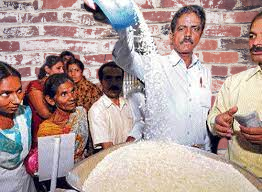
The government has established a robust distribution network to ensure the smooth functioning of Anna Bhagya Yojana. Fair price shops, commonly known as ration shops, act as the primary interface between the beneficiaries and the scheme. These shops are responsible for the distribution of rations to eligible households.
The government maintains strict standards to ensure the quantity and quality of the provided food grains, thus guaranteeing the nutritional value of the received items. Grievance redressal mechanisms are also in place to address any issues or concerns raised by beneficiaries.
Impact of Anna Bhagya Yojana
The Anna Bhagya Yojana in Karnataka, India, has had a significant impact on various aspects of the lives of its beneficiaries. Here are some of the key impacts of the scheme:
Food Security:
The primary impact of the Anna Bhagya Yojana is the improvement in food security among the economically disadvantaged sections of society. By providing subsidized food grains, the scheme ensures that eligible households have access to an adequate and affordable food supply. This has helped reduce the incidence of hunger and malnutrition, particularly among vulnerable groups such as children, pregnant women, and the elderly.
Improved Nutrition:
The scheme has contributed to improved nutritional outcomes among beneficiaries. Access to subsidized food grains allows households to afford a balanced diet and meet their nutritional requirements. This has led to a positive impact on the overall health and well-being of individuals, especially children, who require proper nutrition for their growth and development.
Poverty Alleviation:
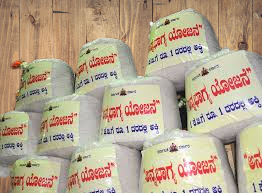
The Anna Bhagya Yojana has played a crucial role in alleviating poverty among the targeted beneficiaries. By reducing their expenditure on food, households can allocate their resources to other essential needs such as education, healthcare, and income-generating activities. This has helped uplift families out of poverty and improve their overall socio-economic conditions.
Increased School Attendance:
The provision of subsidized food grains through the scheme has had a positive impact on school attendance rates, especially among children from economically disadvantaged backgrounds. Access to nutritious meals encourages parents to send their children to school regularly, as they are assured of at least one proper meal a day. This has contributed to increased enrollment and reduced dropout rates among school-going children.
Empowerment of Women:
The Anna Bhagya Yojana empowers women by actively involving them in decision-making and addressing their nutritional needs. The ration cards issued under the scheme are typically in the name of the female head of the household, giving them control over the procurement and utilization of subsidized food grains. This has enhanced the status and empowerment of women within their households and communities.
Reduced Distress Migration:
By providing affordable food grains to economically disadvantaged households, the scheme has helped reduce distress migration from rural to urban areas in search of livelihood opportunities. The availability of subsidized food grains provides a safety net for families, reducing their vulnerability and dependence on migration. This has contributed to the overall development and stability of rural communities.
Social Inclusion:
The scheme has promoted social inclusion by ensuring that vulnerable sections of society have access to basic food grains on an equal basis. It has helped bridge the gap between different socio-economic groups and reduce disparities. The scheme’s focus on reaching out to marginalized communities and providing them with food security has enhanced social cohesion and inclusivity.
Overall, the Anna Bhagya Yojana has had a transformative impact on the lives of its beneficiaries, improving food security, nutrition, poverty levels, education, women’s empowerment, and reducing distress migration. It has brought about positive changes in the socio-economic well-being of the economically disadvantaged sections of society in Karnataka.
Since its implementation, Anna Bhagya Yojana has had a significant impact on the lives of people in Karnataka. The scheme has played a crucial role in reducing malnutrition among vulnerable communities, especially children and women.
By providing access to affordable food grains, it has alleviated the burden of expenditure on food, thus freeing up resources for other essential needs. Additionally, the empowerment of women through their participation in the scheme has contributed to their overall socio-economic development.
Challenges and Criticisms
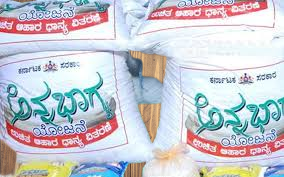
While the Anna Bhagya Yojana in Karnataka, India, has numerous benefits, it also faces certain challenges. Here are some of the challenges associated with the implementation of the scheme:
Identification and Targeting:
One of the key challenges is identifying and targeting intended beneficiaries accurately. Ensuring that only eligible households receive the subsidized food grains requires a robust system to identify and verify the socio-economic status of the applicants. Any errors or discrepancies in this process can result in either the exclusion of deserving beneficiaries or the inclusion of ineligible ones.
Leakage and Corruption:
Another challenge is the potential for leakage and corruption in the distribution system. There have been instances where subsidized food grains intended for beneficiaries have been diverted or siphoned off by corrupt officials or intermediaries. This undermines the effectiveness of the scheme and deprives the intended beneficiaries of their rightful entitlements.
Supply Chain Management:
Effective management of the supply chain is crucial for the successful implementation of the scheme. Ensuring an adequate and timely supply of food grains, storage facilities, and transportation to distribution centers across the state can be challenging. Any disruptions in the supply chain can lead to delays in the distribution of subsidized food grains to beneficiaries.
Quality Control:
Maintaining the quality of the food grains provided under the scheme is essential. There have been instances where the quality of the distributed grains has been substandard, affecting the nutritional value and usability. Ensuring quality control throughout the procurement, storage, and distribution processes is a significant challenge.
Awareness and Outreach:
Creating awareness about the scheme and reaching out to all eligible beneficiaries can be a daunting task. Some eligible households may not be aware of their entitlements or may face barriers in accessing the scheme due to language, literacy, or geographical factors. Adequate efforts must be made to ensure comprehensive outreach and information dissemination to maximize the scheme’s benefits.
Financial Sustainability:
Sustaining the financial resources required for the scheme’s implementation can be a challenge. As demand for subsidized food grains increases, the government must allocate sufficient funds to meet the growing needs. Ensuring long-term financial sustainability while balancing other developmental priorities is a challenge that needs careful planning and resource management.
Changing Food Preferences:
The scheme primarily focuses on providing rice and wheat as subsidized food grains. However, changing food preferences and dietary patterns among beneficiaries may pose a challenge. The scheme may need to be adapted to include other essential food items to cater to the diverse nutritional requirements of the population.
Addressing these challenges requires continuous monitoring, evaluation, and improvement of implementation mechanisms. By identifying and mitigating these challenges, the Anna Bhagya Yojana can effectively fulfill its objectives of ensuring food security, nutrition, and poverty alleviation for the economically disadvantaged sections of society.
While Anna Bhagya Yojana has achieved commendable success, it is not without its challenges. Implementation issues, including delays in the distribution process, have been reported in certain areas.
Leakage and corruption remain persistent concerns that require continuous monitoring and strict action. To address these challenges effectively, awareness campaigns and enhanced monitoring mechanisms need to be in place to ensure the scheme reaches its intended beneficiaries.
Success Stories
Anna Bhagya Yojana has touched the lives of countless beneficiaries across Karnataka, and their stories bear testament to the scheme’s impact. Beneficiaries have reported improved food security, better nutrition, and reduced financial strain. Many families have expressed gratitude for the support received through the scheme, acknowledging its positive outcomes in their lives.
Future Prospects
Looking ahead, Anna Bhagya Yojana has the potential for further expansion and improvement. The learnings from this successful initiative can serve as valuable lessons for other states in India, inspiring the adoption of similar schemes to combat hunger and malnutrition.
Strengthening the implementation process, addressing challenges, and refining the distribution mechanisms will be crucial for maximizing the impact of the scheme.
Conclusion
Anna Bhagya Yojana has emerged as a beacon of hope for vulnerable communities in Karnataka, providing them with access to affordable and nutritious food. The scheme has not only addressed the immediate needs of food security but has also contributed to the social empowerment of beneficiaries.
By focusing on the overall well-being of the people, Anna Bhagya Yojana has set a positive example for other states to emulate in their pursuit of eradicating hunger and malnutrition.
FAQ
Q: How can I apply for Anna Bhagya Yojana?
A: To apply for Anna Bhagya Yojana, eligible households need to register with the designated authorities by providing the required documentation, including proof of identity, income certificate, and residence proof.
Q: What documents are required for registration?
A: The documents required for registration under Anna Bhagya Yojana include proof of identity, income certificate, and residence proof. These documents are essential for verifying eligibility.
Q: How is the quality of rations ensured?
A: The government maintains strict standards to ensure the quality of ration provided under Anna Bhagya Yojana. Regular inspections and quality checks are conducted to ensure that the food grains meet the necessary nutritional standards.
Q: Are there any income limits for eligibility?
A: Yes, Anna Bhagya Yojana has specific income criteria for eligibility. These criteria vary based on whether the household resides in rural or urban areas. The scheme primarily targets households below the poverty line.
Q: What is the impact of the scheme on poverty?
A: Anna Bhagya Yojana has had a positive impact on poverty alleviation by reducing the financial burden of families for meeting their basic dietary needs. By providing affordable food grains, the scheme enables households to allocate resources to other essential needs, thus contributing to poverty reduction.